
warhorse1700
-
Content Count
10 -
Joined
-
Last visited
Posts posted by warhorse1700
-
-
Yes, that makes sense that it would be attached to the presser bar and not the needle bar. Thanks for the link to the parts company. I'm sure it will come in handy in the future.
-
On August 7, 2016 at 6:09 PM, Evo160K said:Warhorse 1700,
Here are several pictures of the 45K53 that member Jimi mentioned I was restoring. The 53 subclass feeds from the top and bottom independent of one another, either can feed faster or slower than the other, and either can be shut down to make it top feed or bottom feed only. I think this type of feed may be advantages when sewing tubular goods or goods that tend to slip on one another. Others on LW may know for sure.
The knob shown by the upper red arrow adjusts the stitch length of the needle thread by moving the knob/fulcrum shown by the middle arrow up and down, Up is the longest stitch, down the shortest. The knob/fulcrum at the middle arrow can be tightened down to prevent the stitch length from moving unintentionally.
The screw and locking thumb nut shown by the lower red arrow move the feeding presser foot with respect to the needle. As far as I can tell, it doesn't change stitch length at all, it only positions where the presser foot comes down on the goods. This may be to insure the points on the bottom of presser feet, such as yours, drop exactly into the needle holes. Sure would appreciate it if some of you good people familiar with this type of feed would comment.
This next two pictures show the tension release bracket with hook and the thread retainer bracket that I had to fabricate thanks in great measure to a lot of guidance from Jimi. Thank you Jimi. The machine is amazing, it's taken a lot of fabrication, but it's running perfectly, and I've enjoyed every minute working on it. It'll get paint once the 45K25 I'm redoing is completed..
Here's a picture of the front.
and a couple of pictures of the lifting mechanism. The lift is adjustable.
And the face
Wow, Evo160K! Yours even has the wax pot on top! I'd like to find one of those for my machine just for show.
For the tension release, is that the top end of the needle bar that It's attached to? Mine doesn't come that far up. In fact when in the down position, it's below the surface of the housing and when up only extends 3/4" out of the top.
-
Sorry I haven't posted recently. It's been a busy week. I did get to practice with it a little and am getting better at keeping my lines straight. It was pulling the bottom thread up through the top no matter how loose I had the top tension. I adjusted the bobbin case tension screw all the way in but it still pulled the bottom thread up. I took the screw out and removed that tension plate and could see that the thread has worn a groove so it wasn't going to give me enough tension. I found a new assembly on ebay for $35 with 5 bobbins so I'm going to give that one a try. In the meantime while I'm waiting for the new one, I bent the tension plate a little and I'm able to get good bottom tension and my stitches look a lot better now.
-
Jimi, Thank you for the parts list and links! I couldn't find that stuff anywhere.
I finally got ahold of the local repair guy. He came out this afternoon and found what was wrong. Are you ready...? THE NEEDLE WAS IN BACKWARDS!
I had seen the warning about the needle being backwards in another thread so I was already suspecting this might be the problem. I could have fixed it myself but I wanted to be sure that the whole machine was ready to go so I'm happy that I had the repair guy look at it and confirm it's readiness.
So far I've been practicing on scrap pieces of veg and latigo and it zips right through them without missing a stitch. Two 9/10oz layers of latigo cause noticeably more drag but i'm barely giving it any pressure on the clutch and I still have to use my hand as break on the fly wheel so it's really not that much of a strain.
Overall I think I'm going to be quite happy with this machine. Thanks for all the advice and information, Jimi and Constabulary!
I just put a short 49 second video up on YouTube.
-
-
11 hours ago, jimi said:hope to see these close ups warhorse, regards jimi.
Wow! Thanks for the pics and info jimi and Constabulary. I'm going to do more studying of the parts list and comparing to my machine tomorrow evening.
In the meantime here's a few more closeups of the parts that jimi requested. I'm trying to keep them as large and clear as possible.
-
Thanks for responding!
WOW! This thing realy is 100 years old? I looked it up but didn't believe it.
You are correct. I do not have the wax heating unit. I probably should have known that it is not a standard 45K since I couldn't find any information on the 52 subclass, anywhere.
I paid $575 for it. I've been searching for months for a decent, used, cylinder bed machine but hadn't found anything in my area until this one. After a bit of research, I found that people were generally quite happy with their 45Ks so I decided to jump on it.
It does work so I don't feel like I made a bad choice, just maybe not the best one.
Thanks for the info on model and the tension adjustments. I'll play with those later tonight.
9 hours ago, Constabulary said:main tension unit has 2 discs, 2 felt washers, a pulley, a (quite) heavy tension spring and the nut on the stud
No, I don't think that they are present, or at least, not complete. I would love to see a pic of what it's supposed to look like.
Thanks again for all of the information!
-
-
Hi Everyone,
I've been lurking around for a few years now but haven't asked any questions because I've always been able to find a thread with the information I'm looking for. I have found a few threads discussing Singer 45Ks but none specifically about the 45K52.
I've been making belts, wallets, gun holsters, card cases, knife sheaths and dog accessories for about 5 years. I feel like it's time to turn my hobby into a business, which is why I bought this machine
I picked the machine up over the weekend. The guy who was selling it bought it to fix horse blankets and harnesses but ended up with some health problems and can't operate the machine anymore. I was able to thread it, based on the 45K manual that found on the forum, and run the machine before I bought it.
It's obviously an old machine but in great shape and had been recently re-built and tuned by a professional Industrial sewing machine repair man. People in the area swear by this repair man but so far I haven't gotten any response to my phone calls.
I'm pretty sure, from my reading, that it should be a decent machine for belts, dog harnesses and leashes, and maybe knife sheaths and gun holsters too.
My questions are: Do I actually have it threaded correctly?
Depending on the leather I'm putting through it, it sometimes pulls the knots through the bottom or top of the leather. Is this a tension problem?
It will only make an actual stitch at the slowest crawl. If it picks up any speed the thread breaks. Could this be a tension problem or something else?
How do I set the tension?
After looking through the manual that I found here, and then inspecting my machine, I think I'm missing some features that other 45Ks have such as: reverse and adjustable stitch length. Does this machine really not have an adjustment for stitch length?
What is the wheel to the lower right, near the belt? Is it a bobbin winder?
Finally: what kind of foot does it have and should I get something different?
Thanks for all of the information that I have picked up here over the past few years. I hope you all can help me out with some of these questions.

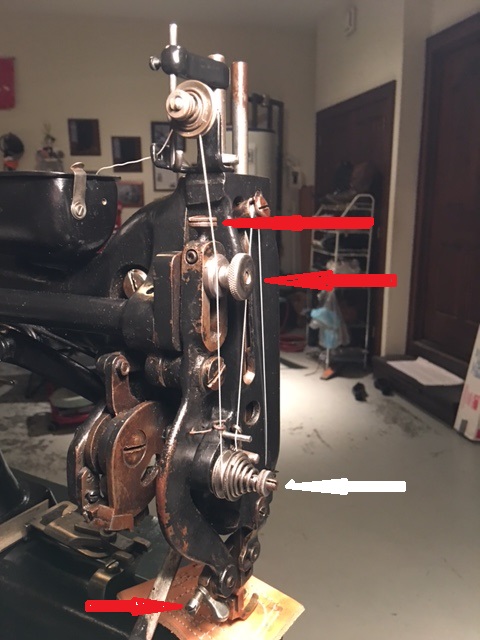
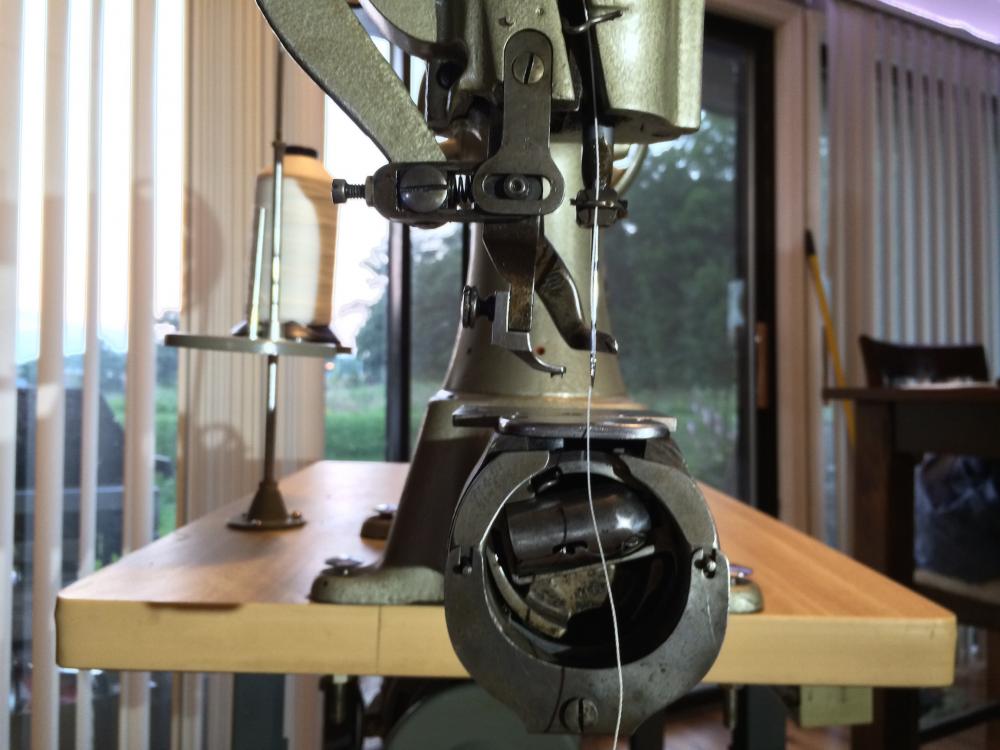

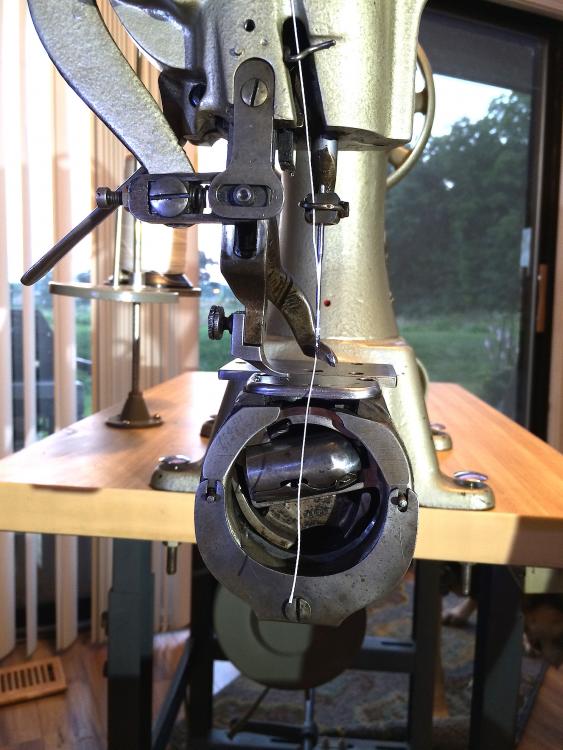
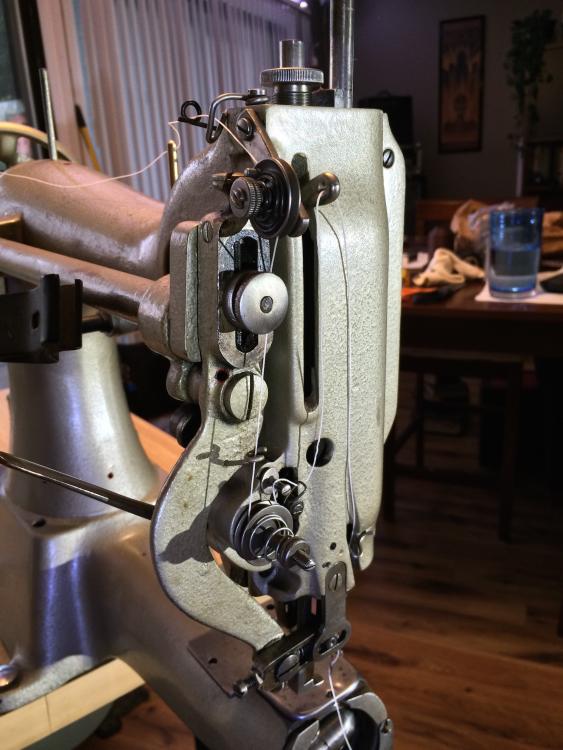
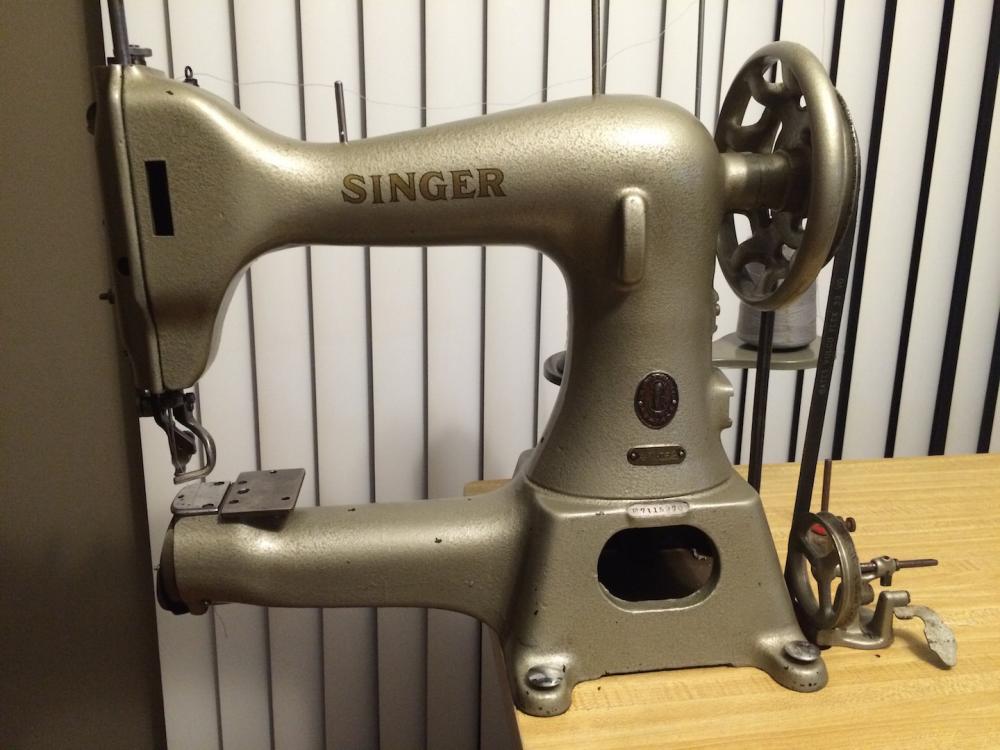
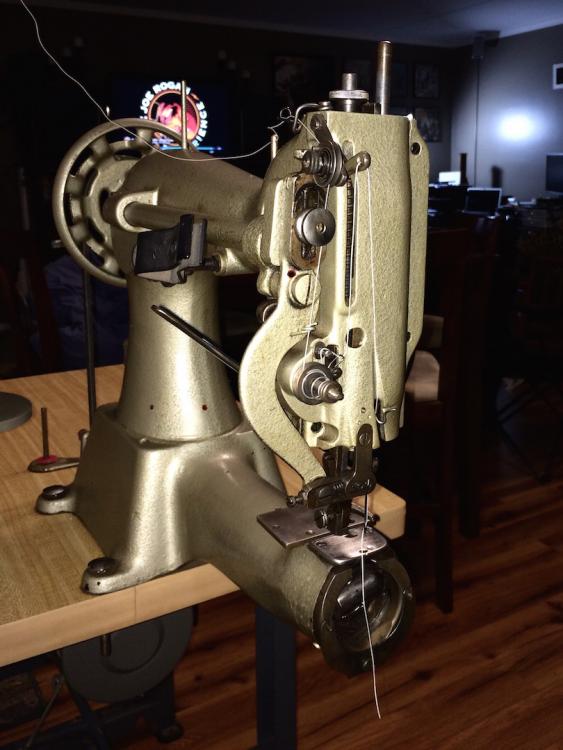
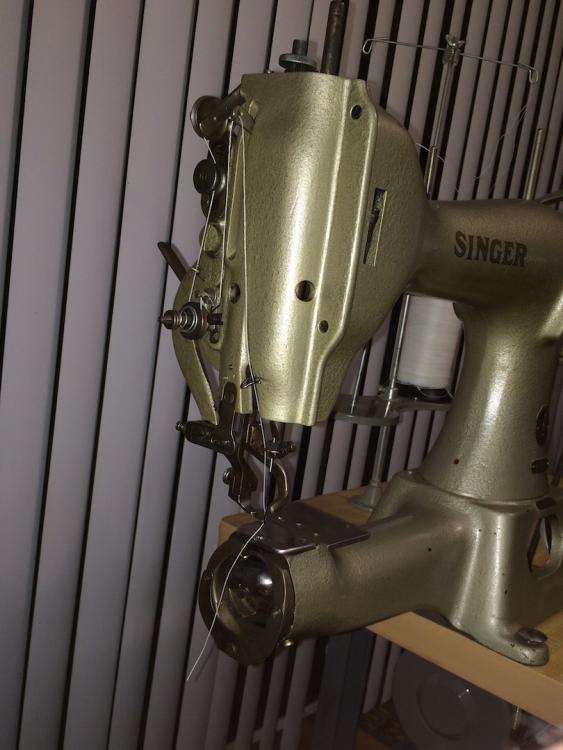
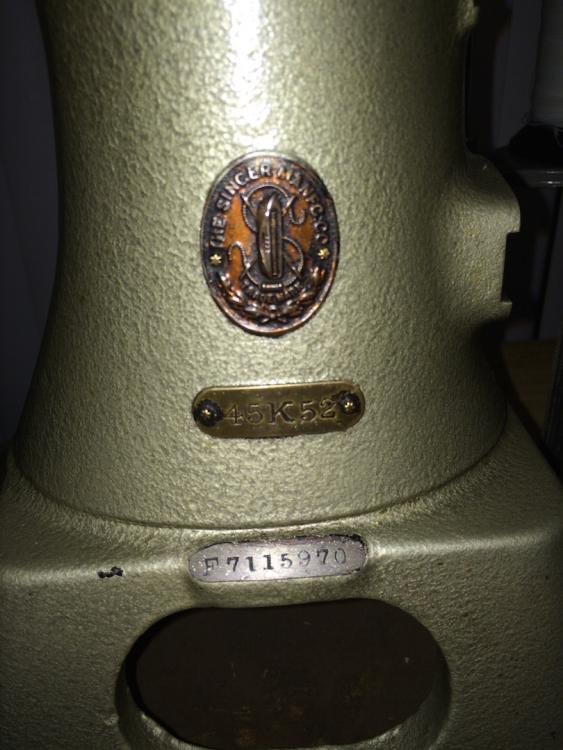

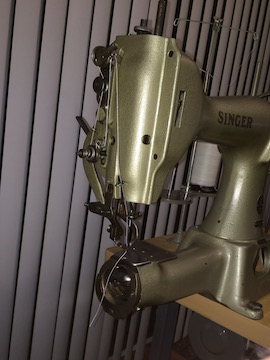


Consew 339 RB-1?
in Leather Sewing Machines
Posted · Report reply
Hello everyone,
About a year and a half ago I got some great info from you all on a 1916 Singer 45k52 that I had picked up. That machine is working very well sewing heavy belts, holsters, knife sheaths, and small accessory bags.
I love the 45k but no one makes accessories for 100 year old machines. So now I'm looking for something a little more modern and lighter weight for sewing lighter and softer leathers.
I was thinking about a 206 RB but, while browsing online I found a Consew 339 RB-1. It's a 2 needle machine.
Questions:
1. Can a 2 needle machine be used with just 1 needle at a time?
2. Can It sew lighter, softer leathers such as, 2oz upholstery or garment, without skipping stitches.
3. How much can it sew through/handle?
For example, 2 layers of 2oz upholstery with nylon webbing sandwiched between them?
How about 1 or 2 layers of 6oz veg?
4. Is there anything to watch out for with a 2 needle machine? Is it much different than a single needle?
I appreciate all of the advice I got last time. It was a huge help.
Hopefully someone has some good info for me on this one too.